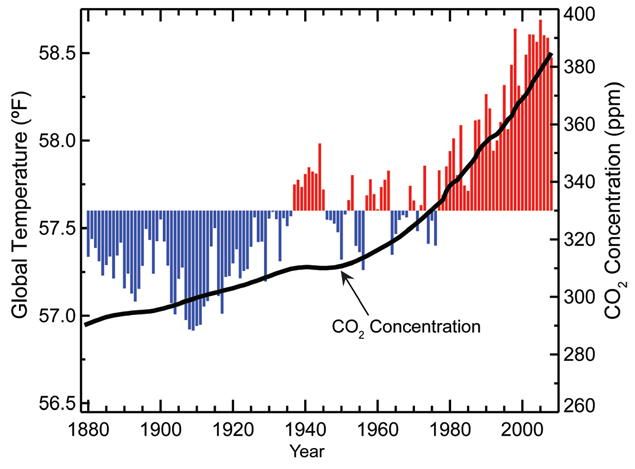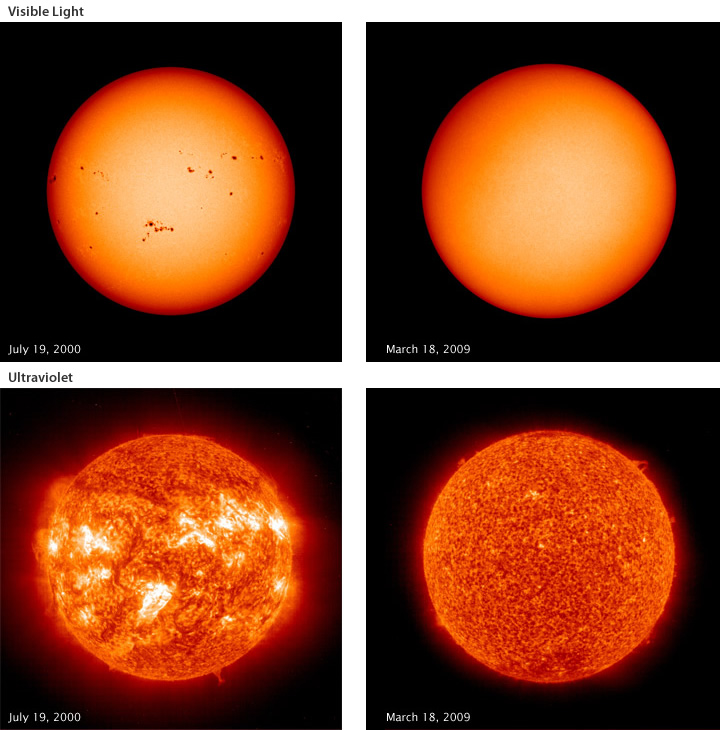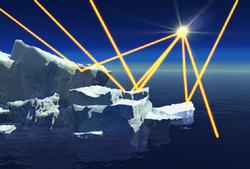So here it is. The post on how climate change works. Today, we return to Math!
*added later: thanks to the friends who noticed typos and order of magnitude errors, and prompted me to correct them
** Comments section has been opened up.
Climate Change
Some people say that the amount of CO2 in the atmosphere is so small that it couldn't possibly do anything. They say this because if you take one million random molecules in the atmosphere, only 400 of them are CO2. Seen another way, oxygen is 21% of the atmosphere, and CO2 is .04% (It was .028% before we got started playing with things. So we raised the % of CO2 by .01)
People who believe a small perturbation cannot change a complex system are in denial. Complex systems, like the climate or our bodies, respond to some inputs very strongly. As dumb as this comparison is, lets consider a poison introduced to your body. Let's say you weigh 50kg (a little more than 100 lbs). 0.01% (this is how much we changed CO2 by) of your body weight is .005kg, or 5000mg. A lethal dose of cyanide in a human is about 1.5mg per kg of weight. For a 50kg person, this is of 75mg. 5000mg of cyanide would be overkill.
It may seem drastic to compare CO2 in the atmosphere to cyanide in the body. One causes warming in the atmosphere (at least scientists argue that), the other causes death of a single person. It may actually be somewhat an apt comparison. Without warming caused by greenhouse gases, life as we know it would not exist on Earth.
Maths!
Here I will show that without greenhouse gases, the Earth would be a frozen wasteland. CO2 and other gases trap heat, more or less preventing heat given off from the Earth from escaping by reflecting back on itself.
The heat on the Earth's surface and in its atmosphere has one major input, and one major output. The input is solar energy (we call it solar radiation. Not the same type of radiation that uranium has when it goes through a radioactive decay.). The output is radiation that the Earth gives off. As the Earth heats up, it gives off more radiation. The output of heat from the Earth needs to match the input of heat from the sun, otherwise it heats up or cools off. If the output of heat drops and the input of heat remains the same (say, for instance, that greenhouse gases prevent output of heat by trapping some of it), then the planet will retain heat until it is so warm that it gives off enough energy to again have an output that is equal to the input.

Schematic of how greenhouse gases trap and reflect heat from the Earth, preventing it from being released once it is absorbed.
Let's start from the basics, the energy emitted from the sun. If you want to take my word for this, you can skip to earth temperature calculation part
The energy emitted by the sun is based on its surface temperature. In fact, it is the surface temperature related to the 4th power (the reasons for this lie in quantum mechanics. If you are feeling smart, brave, or arrogant about your smarts, follow that link to find out why it is T^4).

Here, R is the radius of the sun,  and
and  is the stefan-boltzmann constant used specifically for blackbody radiation:
is the stefan-boltzmann constant used specifically for blackbody radiation:  . The surface temperature of the sun is 5800K.
. The surface temperature of the sun is 5800K.
So this is how much energy is emitted in total by the sun:
 emitted by the sun.
emitted by the sun.
What fraction of this hits Earth? Let's call is  for flux of energy to the surface of the Earth.
for flux of energy to the surface of the Earth.
 where d is the distance between the sun and Earth(
where d is the distance between the sun and Earth( )
)

Satellite observations show the actual value is closer to 1370. So our very basic theory shows us correct within 1.5%. So far so good, as far as this basic math model goes.
So, at the equator, we get 1370 watts for every square meter of land. As you move poleward, this amount decreases by roughly a factor of cosine.
Earth's Temperature
Hokay, so before we had an equation with  in it. We can get Earth's equilibrium temperature by doing all this process in reverse. One important thing to consider: not all of this light reaches the ground. A lot is reflected. White snow, for instance, reflects about 90% of light. Water absorbs about 90% of light. The factor of reflection is called albedo (we will call this A in our equations). Overall, the current albedo for Earth is about .28. In other words, 28% of light is reflected back to space.
in it. We can get Earth's equilibrium temperature by doing all this process in reverse. One important thing to consider: not all of this light reaches the ground. A lot is reflected. White snow, for instance, reflects about 90% of light. Water absorbs about 90% of light. The factor of reflection is called albedo (we will call this A in our equations). Overall, the current albedo for Earth is about .28. In other words, 28% of light is reflected back to space.
Hokay, so light hits the Earth. It hits 1/2 of the Earth, which is a globe. So the light lands on the surface, which for a globe is roughly a circle. A circle with the radius of the Earth, 
So the mean solar radiation absorbed by the Earth is:

We can approximate the black-body temperature of the Earth to be equal to this. So
 where
where is the temperature of the Earth
is the temperature of the Earth

substitute numbers in:

Note, Kelvin is just celsius temperature, except 0 kelvin is absolute zero, the coldest possible temperature in our universe. 0 kelvin is roughly -273 C. So 256 K is 17 degrees below 0C. Let me emphasize that.
From a strict radiative standpoint, the surface temperature of the Earth should be at the very warmest 17 degrees celsius below freezing.
Did we do something wrong? Nope. We forgot one very important factor. Greenhouse gases trap heat. Without CO2 and methane and water (yes, water traps heat) in our atmosphere, the Earth would be frozen solid, and there would be no life, at least not on the surface. Even the oceans would be frozen over.
How greenhouse gases absorb and trap heat
A CO2 molecule has a C in the center and two oxygens hanging off it. When light of a certain wavelength hits it, those two oxygens start vibrating faster and get excited. Which means the light was absorbed and converted to heat. It turns out that the temperature of the Earth is such that the bulk of light it emits is a wavelength that things like CO2 and H2O and CH4 can absorb. They are heated up. If this happens all over the place, the entire atmosphere heats up. And then, since everything emits light based on its heat, the CO2 molecules release some of this energy as light, again in infrared, and it has a chance of being re-absorbed by another molecule. Eventually some of these photons (the light energy) escape the Earth.
So, now we have to change our equilibrium temperature equation to have a greenhouse forcing:
 where f is the greenhouse forcing factor.
where f is the greenhouse forcing factor.
I am not going to run through this, cause everyone gets my point. Going back to our analogy, these tiny amounts of CO2 and other gases in the atmosphere make our planet livable by increasing the temperature. And the more we pump into the atmosphere, the more the atmosphere and surface of the Earth will heat up. In short, climate change is real, and it is caused by people.

Here we have CO2 concentrations over the past 400,000 years plotted against temperature. These can be derived with reasonably accuracy directly from air bubbles in ice cores that are up to 700,000 years old, or inferred from isotope ratios of oxygen (another story, another time)

Here is more recent data, with direct measurements. Yes, the axes are scaled to make the correlation stand out. The point is that the correlation between rising CO2 and temperature exists. CO2 goes up, then temperature goes up.
At this point, it should be clear how important CO2 and other greenhouse gases are, and how changing GHGs by a small amount can make some pretty big changes in the complex Earth system. These conclusions are rooted in science. It's the same science that makes cars work. Anyone who believe in cars should also believe in GHGs causing climate change.
Some effects of climate change
We all have heard of sea level rise. Most people think the primary cause of all the sea level rise we have seen over the last century (about an inch every 15 years) is melting glaciers. This is untrue for most of the sea level rise of the last century. What causes it, then? Water is most dense at 4 degrees celsius. If it moves in either direction away from this, it begins to expand (as ice in one direction, as water in the other). Thermal expansion of water has caused much of the sea level rise we have seen.
Sea ice melting doesn't raise sea level at all. Because the ice contracts when it becomes water. In short, sea ice doesn't displace water. Those melting arctic ice caps aren't going to change the sea level much from melting alone* (we will get back to this later).
Melting glaciers, on the other hand, will make a difference in the future. That is water that has been removed from the ocean and placed on mountains. When it comes off those mountains, it flows to the ocean. It is estimated that the Greenland ice sheet has about 7m of sea level rise worth of water, or about 20 feet. Most of Florida would be gone in this case. NYC, Shanghai, many European cities, Vancouver, DC, Boston, etc., will be underwater. No one really knows what timescale this melting will occur at. We will cover this more in depth in another article. These may have already started to go. The average annual sea level rise for most of last century was about 1.7mm/year. In the past decade, it has doubled to about 3.4mm a year. The Greenland ice sheet has definitely been melting in recent years. It is unclear how fast this will unfold. More on that later.
*Melting Arctic ice: remember when I said that snow reflects 90% of light energy, and water absorbs 90%? What happens when we melt ice caps, then? More of the light that hits that area will be absorbed. So let's recap here. The Earth heats up. The ice caps melt, exposing water, which absorbs more light, making the Earth heat up more. This is what you call a positive feedback mechanism. It is not "positive" in that it good. Positive means that it has an accelerating effect. Normal people call this a self-perpetuating cycle. Some people call it a "vicious cycle." But we are going to call it a positive feedback mechanism, and know that in this case, it is a bad thing.
** A colleague mentioned that I should also talk about the water vapor feedback, since it is often a tool used by climate skeptics. Water vapor is a very strong greenhouse gas. When the temperature rises, more water vapor goes into the atmosphere, which can in turn raise temperature more. It sounds like a permanent positive feedback mechanism, but it has stark limits if it acts alone. But when you put CO2 into the atmosphere, it causes warming, and then causes more water vapor. In this case, we can say that water vapor amplifies CO2 greenhouse forcing. Again, the additional water vapor warming from CO2 atmospheric load increase is limited, but NASA and later studies show that in some places, the effect of water vapor can amplify the greenhouse forcing of CO2 by a factor of 2. While the theory is not perfectly understood, the observations (areas with high water vs. low water, accounting for all other types of forcing) are very good.
And now we have exceeded 2000 words.
-Jason Munster



Pingback: Climate Change 2 | Jason Munster's Energy and Environment Blog
Pingback: Geoengineering | Jason Munster's Energy and Environment BlogJason Munster's Energy and Environment Blog